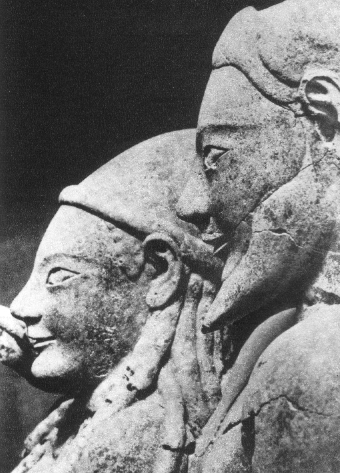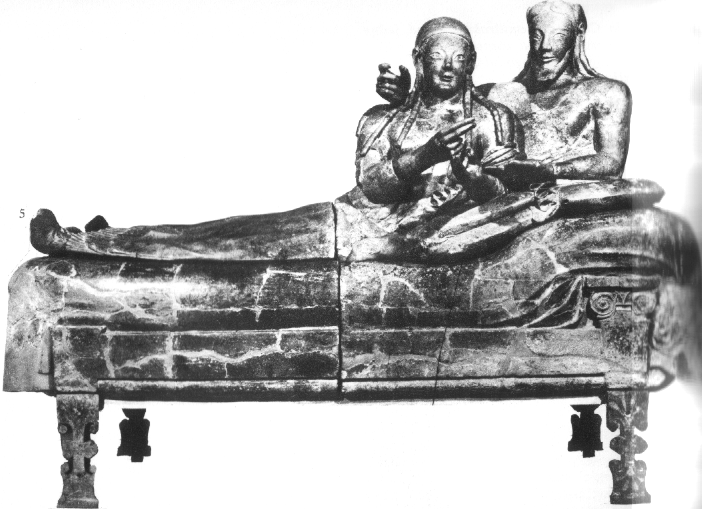|
|
|

Etruscans developed an impressive artistic culture from the seventh century BC onwards. Their art attracted attention even before archaeology became a scientific discipline. The Etruscan interest in burial rites and the cult of the dead has resulted in a collection of well-preserved remnants of their civilisation.
The vast dimensions of the cemeteries, the architecture of the tombs and the richness of the relics found beside the dead are explained by the importance of the next world to the Etruscans. Their religion is distinguished by its faith in the omnipotence of the gods and of fate, which led to a feeling of the insignificance of the individual faced as he was by superior powers and concerned for the well-being of the dead.
The man who listened all his life to talk of divine powers is made aware of the fate which is to be his after death. Although the cult of the dead was important in the Greek and Roman worlds, in Etruria life after death meant more than life on earth.
One of the most important facets of Etruscan art and archaeology is the result of this obsession with death. Their architecture is far better known from its tombs than from the rare traces of its houses and temples. The liturgy was crucial to Etruscan life. The Roman historian Livy described the Etruscans a few centuries later as 'a people who above all other things were distinguished by their devotion to religious practices'. Religion, like language, bound together the disparate city-states. The huge Etruscan cemeteries in which tumuli were succeeded by chamber tombs, surely deserve the name of necropolis , since they were indeed cities of the dead, with their innumerable tombs ranged neatly along the funerary way, as at Cerveteri.
 Necropolis
Cerveteri
Necropolis
CerveteriTo the Etruscans, fate was all. They believed that their destinies had been predetermined by what they called saecula, or phases of history. Central to Etruscan religion was the belief that life continues after death and the tombs of the rich were especially sumptuous, lavishly decorated by Etruscan artists and artisans.
Sculpture had its origins in this same preoccupation with death. A portrait of the dead man was needed to ensure a sort of magical survival for him.
 Terracotta sarcophagus from Cerveteri , 550 BC
Terracotta sarcophagus from Cerveteri , 550 BC 
As for frescoes, they were intended to enliven the chill gloom of the sepulchre, to give it colour and movement, and to enable the dead man to participate for ever in the games and feasts shown on the walls of his last home.
 Fresco
from Chamber Tomb in Tarquinia
Fresco
from Chamber Tomb in TarquiniaEtruscan archaeology leads us to a world which was far removed from the Greeks in its basic preoccupations and values. Although Greek and Etruscan art developed more or less simultaneously, the function, purpose and nature of art were disparate. Etruscan art, from its earliest development, was the expression of a community, which was avid for wealth and luxury, drawing the sources of this wealth from its extensive maritime activity which exposed it to a wide variety of foreign influences. Etruscan artists, however, always added a special twist of their own.
![]()